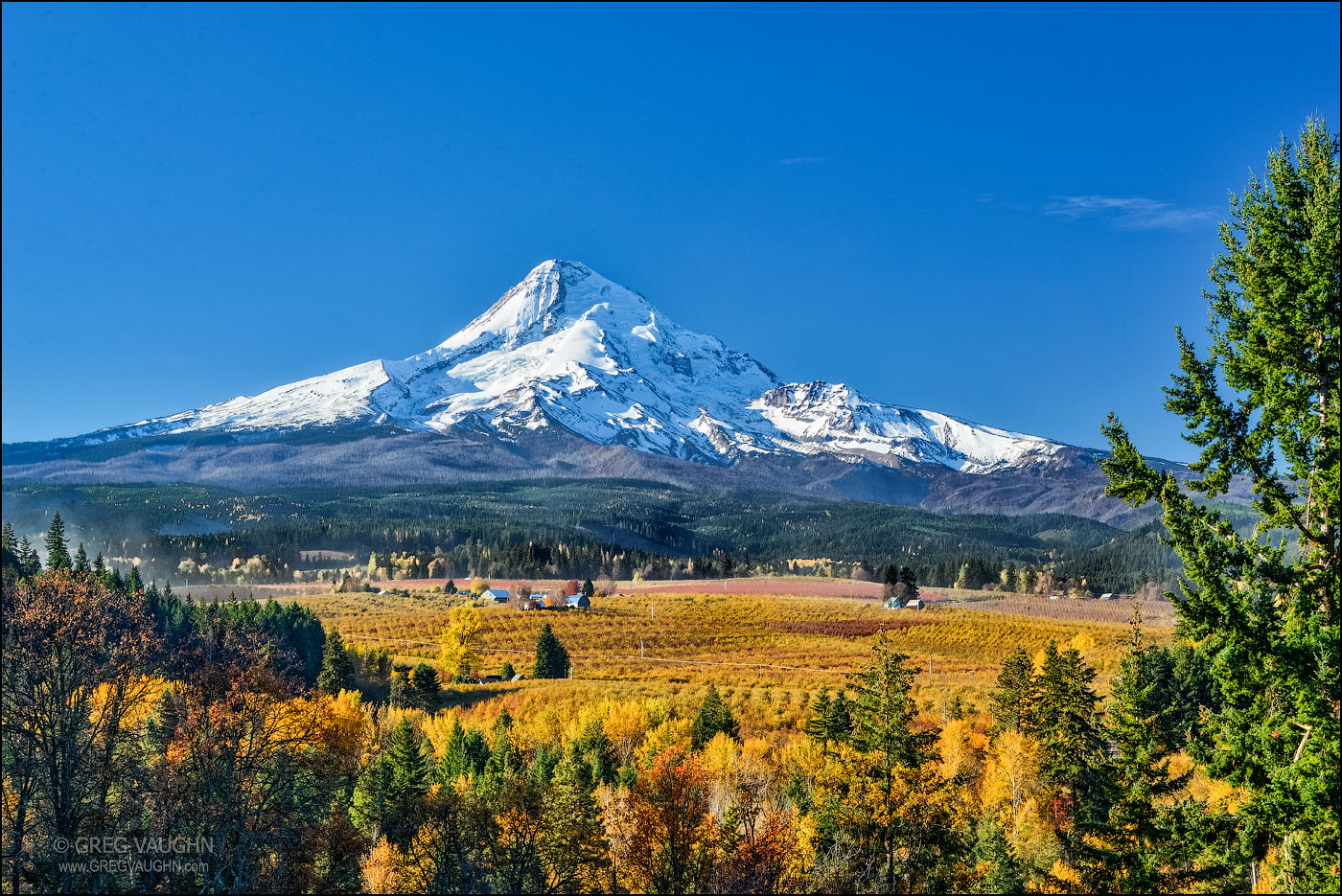
Autumn has long been the favorite season of many nature and landscape photographers. Changing weather and the brilliant colors of leaves provide great opportunities for getting out and capturing the beauty and magic of nature.
Oregon might not have the extensive hardwood forests of the northeast USA or the Smoky Mountains but our native bigleaf maple, vine maple, dogwood, aspen, and cottonwood trees certainly put on a show.
Based on my 30+ years of photographing the Pacific Northwest, here are what I consider to be the best places for viewing and photographing fall color in Oregon.
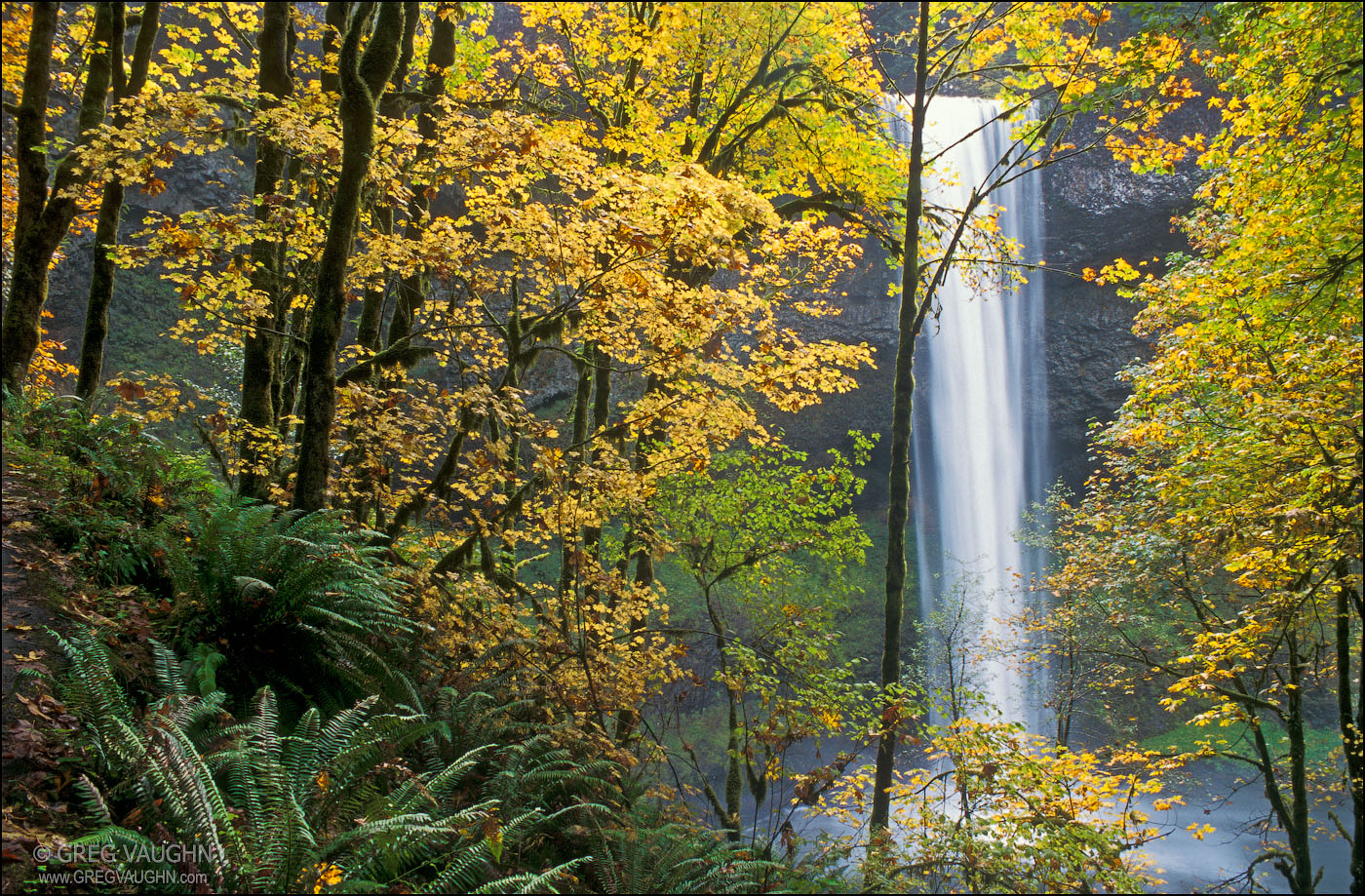
1. Silver Falls State Park
The waterfalls on the Trail of Ten Falls are great photo subjects in any season, but especially so in Autumn. The bright yellow leaves of bigleaf maple and multi-hued foliage of vine maple light up the forest and offer opportunities for framing the waterfalls in your compositions. I recommend starting early in the morning at South Falls – while the winds are calm and the sun hasn’t quite crested the ridge east of the falls.
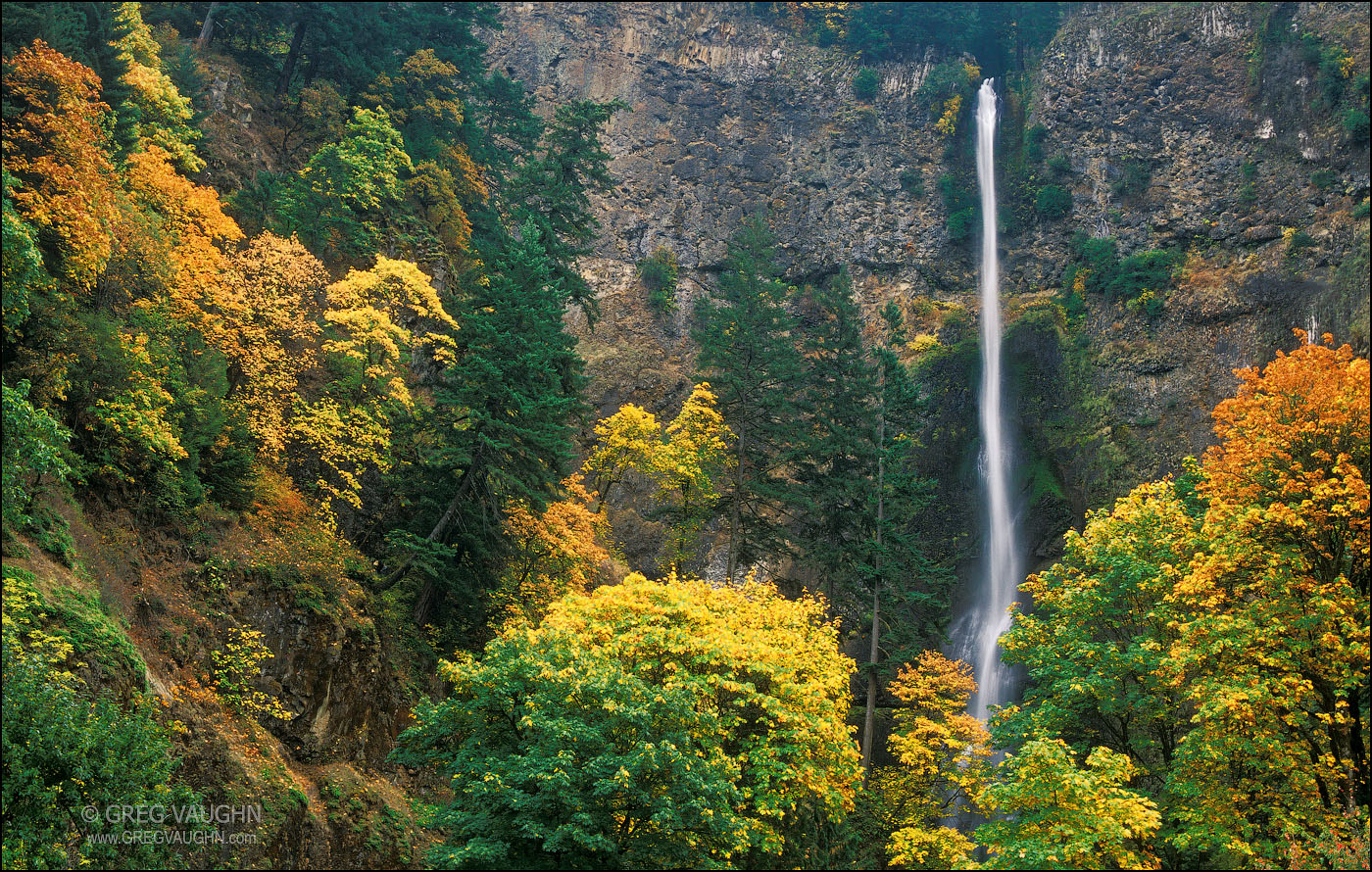
2. Columbia River Gorge and Hood River Valley
The forests along the Historic Columbia River Highway continue to recover from the devastating wildfire of 2017. A few of the hiking trails in the area remain closed, but you’ll find plenty of fall color at Multnomah Falls, Horsetail Falls, Wahkeena Falls, and Latourell Falls. In Autumn the sun is generally low enough that these north-facing waterfalls remain shaded most of the day. The fruit orchards in Hood River Valley can be very colorful and there are multiple locations for landscapes with snow-capped Mount Hood or Mount Adams in the distance. If you drive up Highway 35 towards Mount Hood, you can spot western larch trees among the Douglas-fir and western hemlock. The larches are deciduous conifers with needles that turn yellow and orange in autumn.
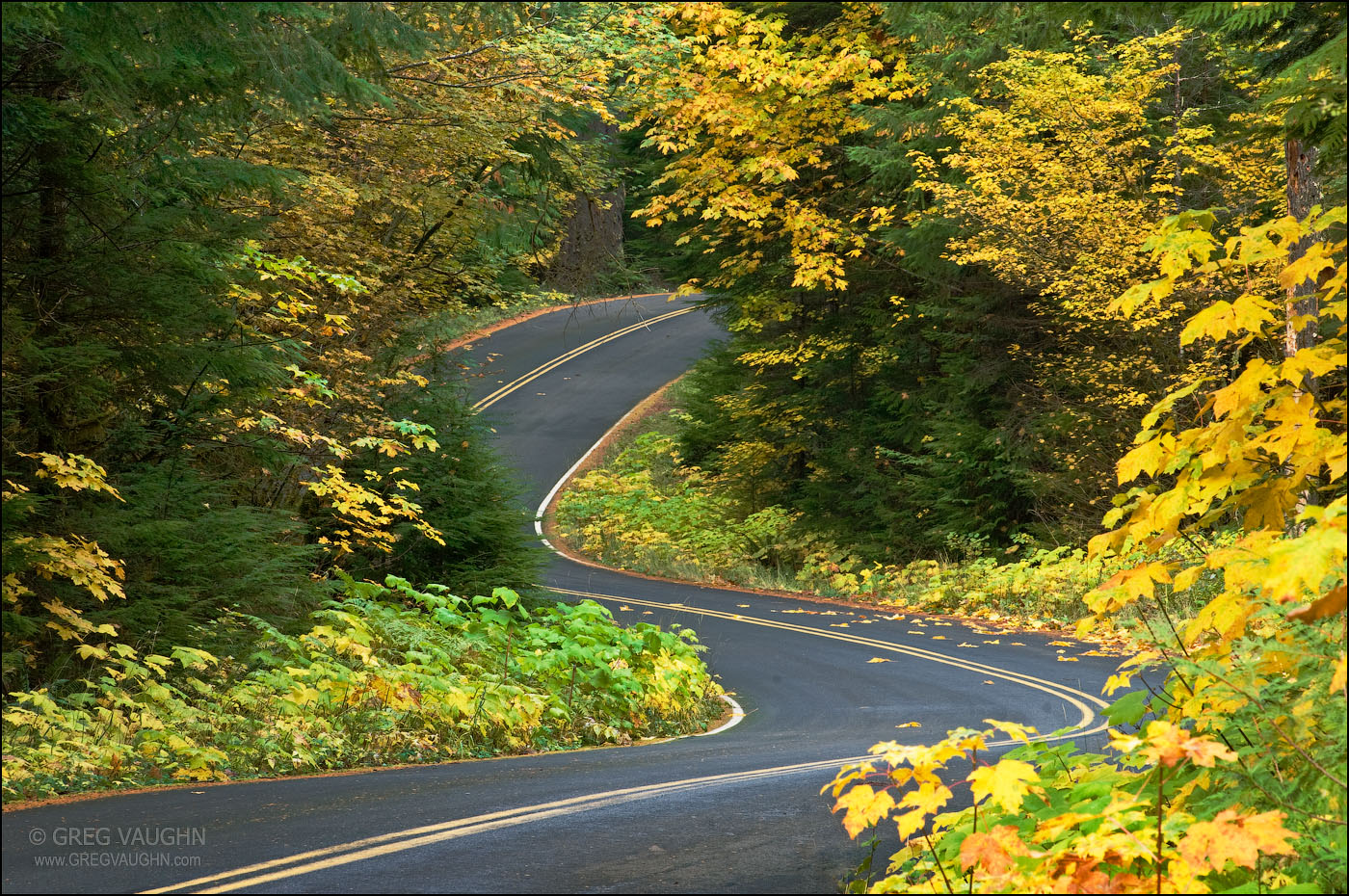
3. West Cascades Scenic Byway
This All American Road winds for 215 miles through some of the best forest in the western Cascade Mountains. The Byway follows several major rivers and traverses mountain passes in its course from Estacada just southeast of Portland to Oakridge on the Willamette Pass Highway. You’ll find beautiful fall color from bigleaf maple and vine maple along much of the byway, but my favorite section is Aufderheide Drive (USFS Road 19) which follows the south fork of the McKenzie River, rises to a pass at Box Canyon, and then continues south along the North Fork Middle Fork of the Willamette River. The road is good two-lane pavement the entire route.
Update, September 2021: USFS Road 46, the section of the Byway between the Clackamas River and Detroit Lake is closed until hazardous trees and road damage from recent wildfires can be addressed. Also, a rock slide has closed part of FR 19, although the section along the North Fork Middle Fork Willamette River is accessible via Highway 58 at Westfir. Check the Willamette National Forests for current road information.
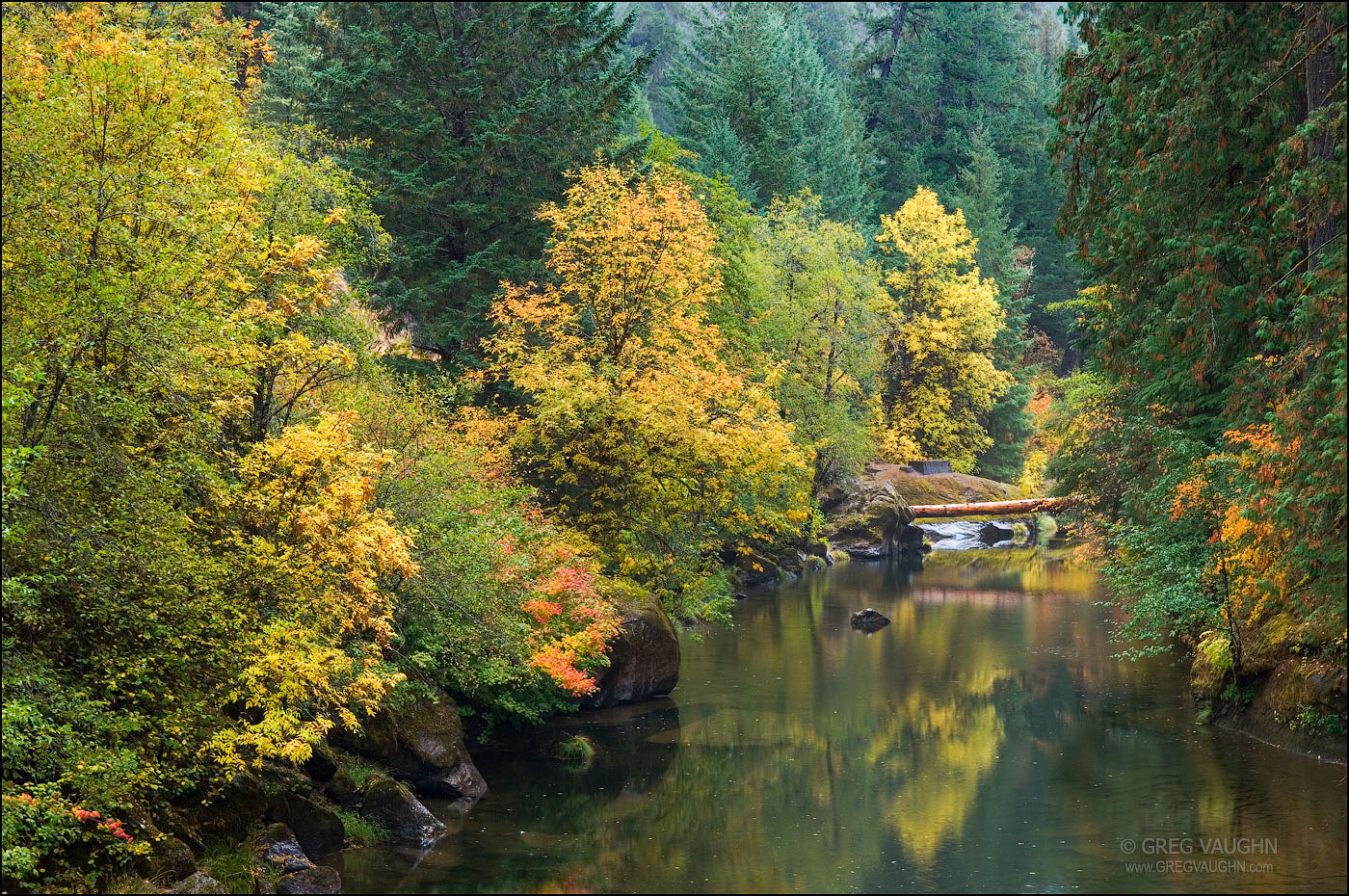
4. North and South Umpqua Rivers
Some of the best (and least visited) waterfalls in Oregon are on the North Umpqua and South Umpqua Rivers and their tributaries. Toketee Falls on the North Umpqua is one of the most beautiful waterfalls in the Pacific Northwest. With a little effort, you can visit several waterfalls along each of these river drainages in a single day. On a multi-day visit, you can do short, easy hikes to a number of very photogenic falls. As elsewhere in the western Cascades, the fall color is predominantly bigleaf maple and vine maple.
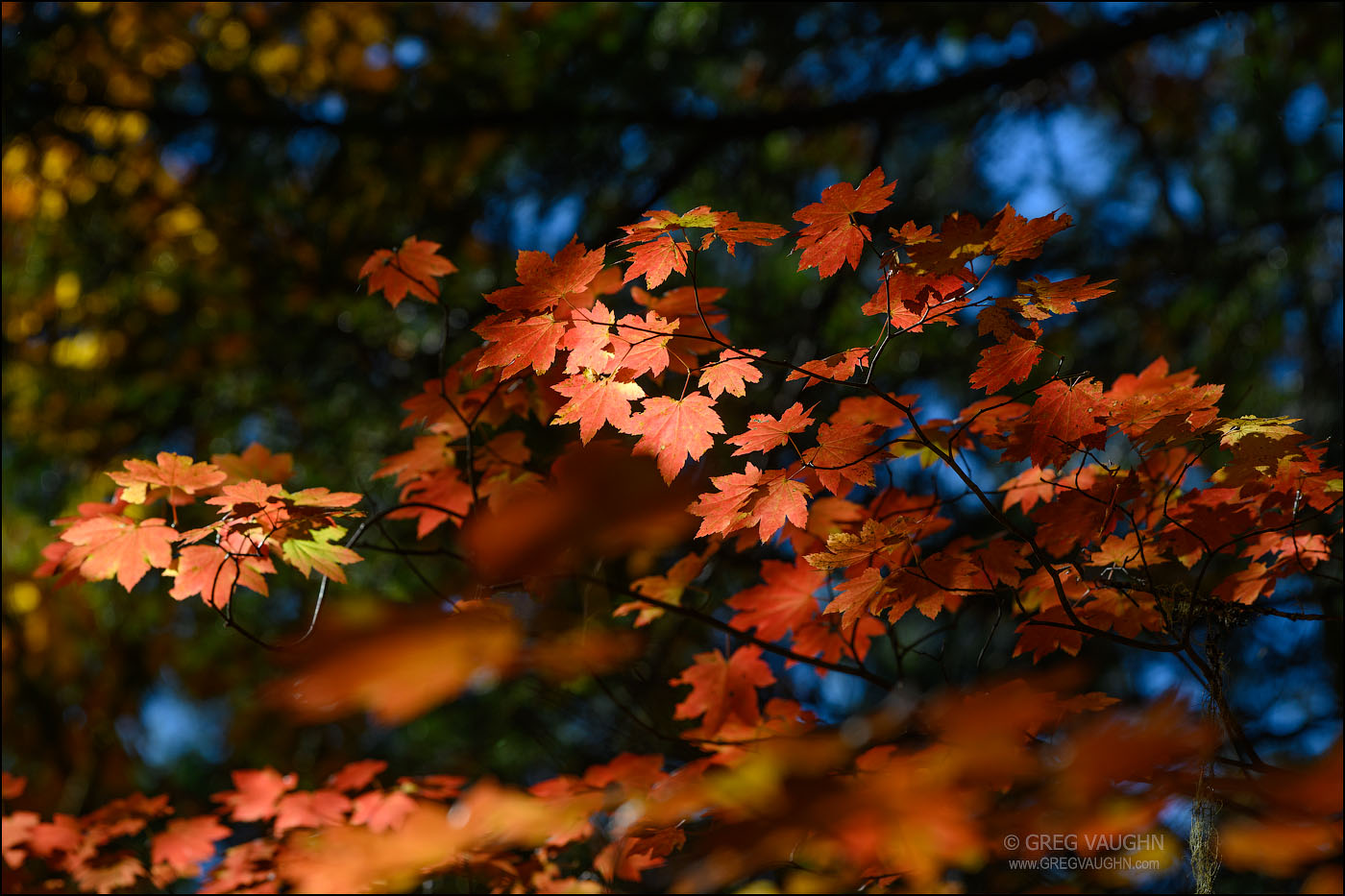
5. Upper Rogue River
From its headwaters on the western edge of Crater Lake National Park, the Rogue River flows through a beautiful forest that has grown on ancient lava flows. Locations you’ll want to visit include Natural Bridge, Rogue Gorge, and National Creek Falls. In addition to the bigleaf and vine maple trees, look for Pacific and red-osier dogwood with autumn leaf colors ranging from russet to plum to magenta. You can make a great loop trip by following the Rogue-Umpqua Scenic Byway, taking in the Upper Rogue River, the North Umpqua River, and Diamond Lake.
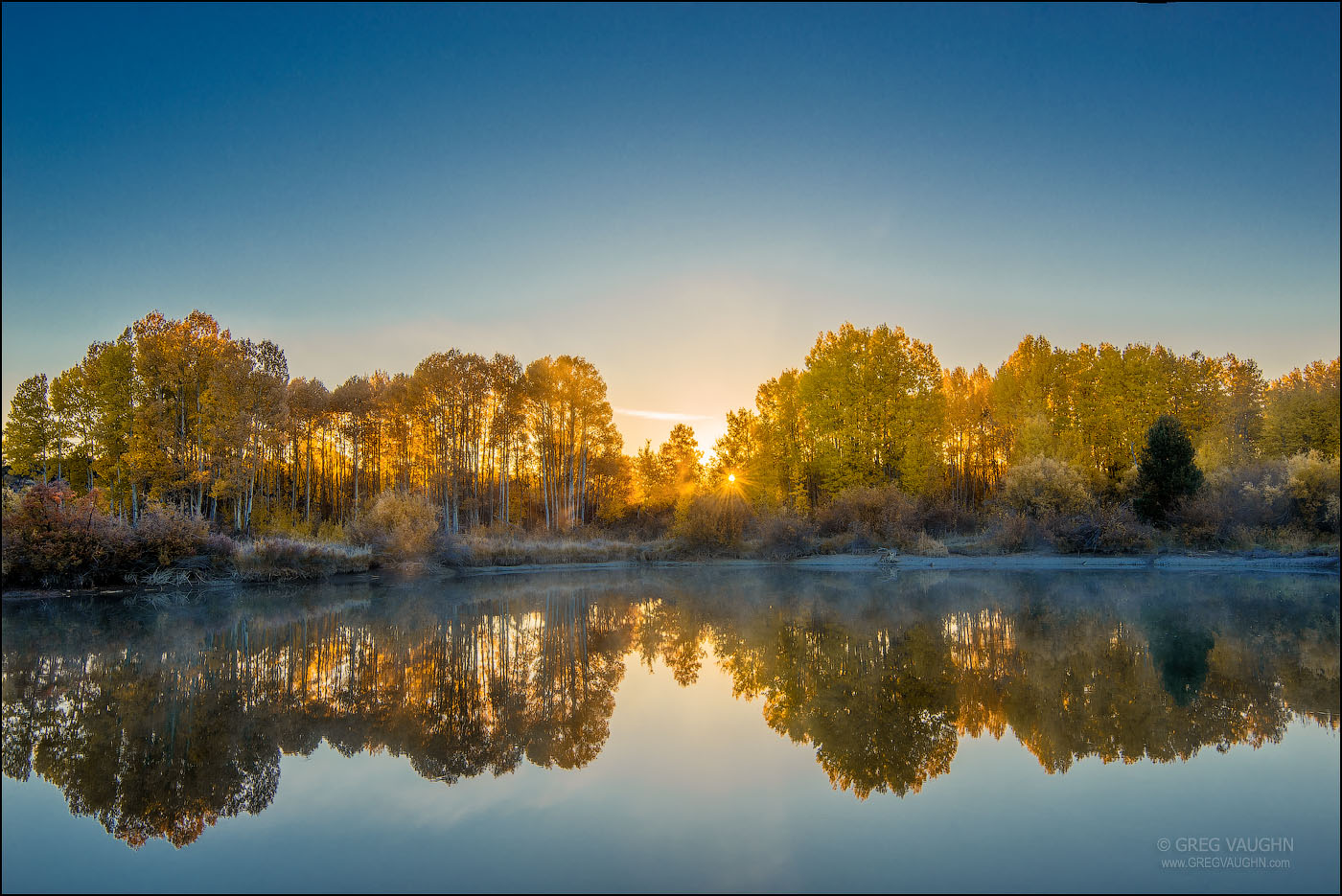
6. Deschutes River Trail
This trail, popular with mountain bikers, runners, and hikers, follows the Deschutes River for 12 miles from downtown Bend south to Benham Falls. Most of the way the river is lined with juniper, lodgepole pine, and ponderosa pine trees but at Big Eddy and immediately upriver of Dillon Falls there are large stands of aspen trees that turn golden in autumn. Both of these areas are easily accessible from Forest Road 41 on the west side of the river. Just above Dillon Falls, the river is placid, often providing a mirror reflection of the aspen on the east bank. This location can be photographed at just about any time of day, but early morning with the rising sun showing through the trees is especially magical. Please help preserve the delicate riparian habitat here – there are plenty of vantage points from established trails and there is no need to trample the vegetation on the riverbank in an attempt to find a unique angle.
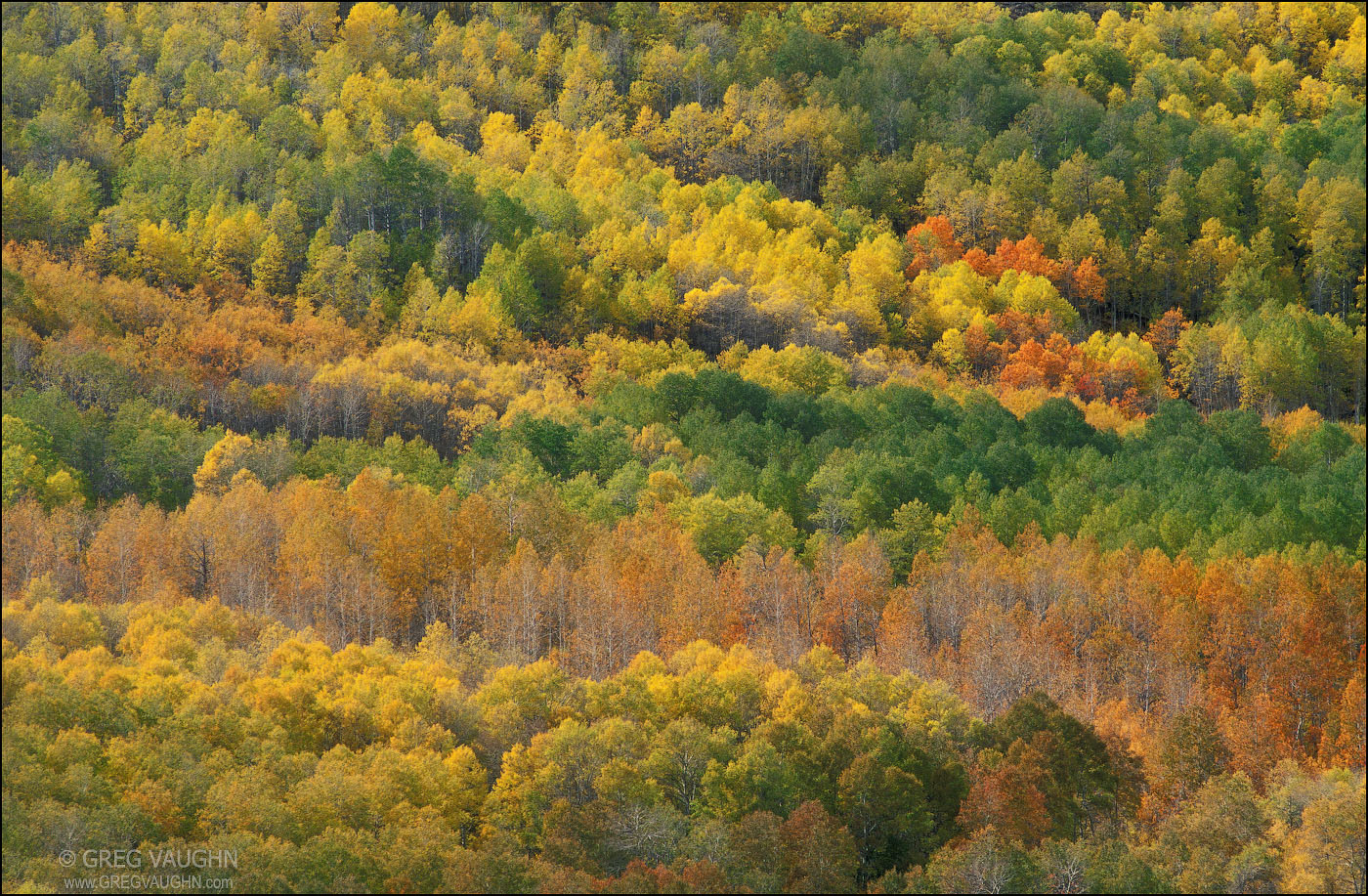
7. Steens Mountain
One of the favorite destinations for high desert lovers in Oregon is this 30-mile-long fault-block mountain in the southeastern corner of the state. The eastern face of the mountain rises abruptly for a vertical mile above the Alvord Desert, while a loop road on the west side affords vistas of glacial cirques and glimpses of wildlife. For fall color, head to Jackman Park to photograph a landscape covered with an extensive aspen forest. More glowing aspen can be found in the area around Fish Lake. This is one of the first locations in Oregon to reach peak fall color, usually in mid- to late September. The folks at the BLM district office in Burns are often able to provide information on the status of the trees. Take note: fall color coincides with hunting season, and the Steens is a very popular location for deer hunters so use caution and wear blaze orange when you’re out and about.
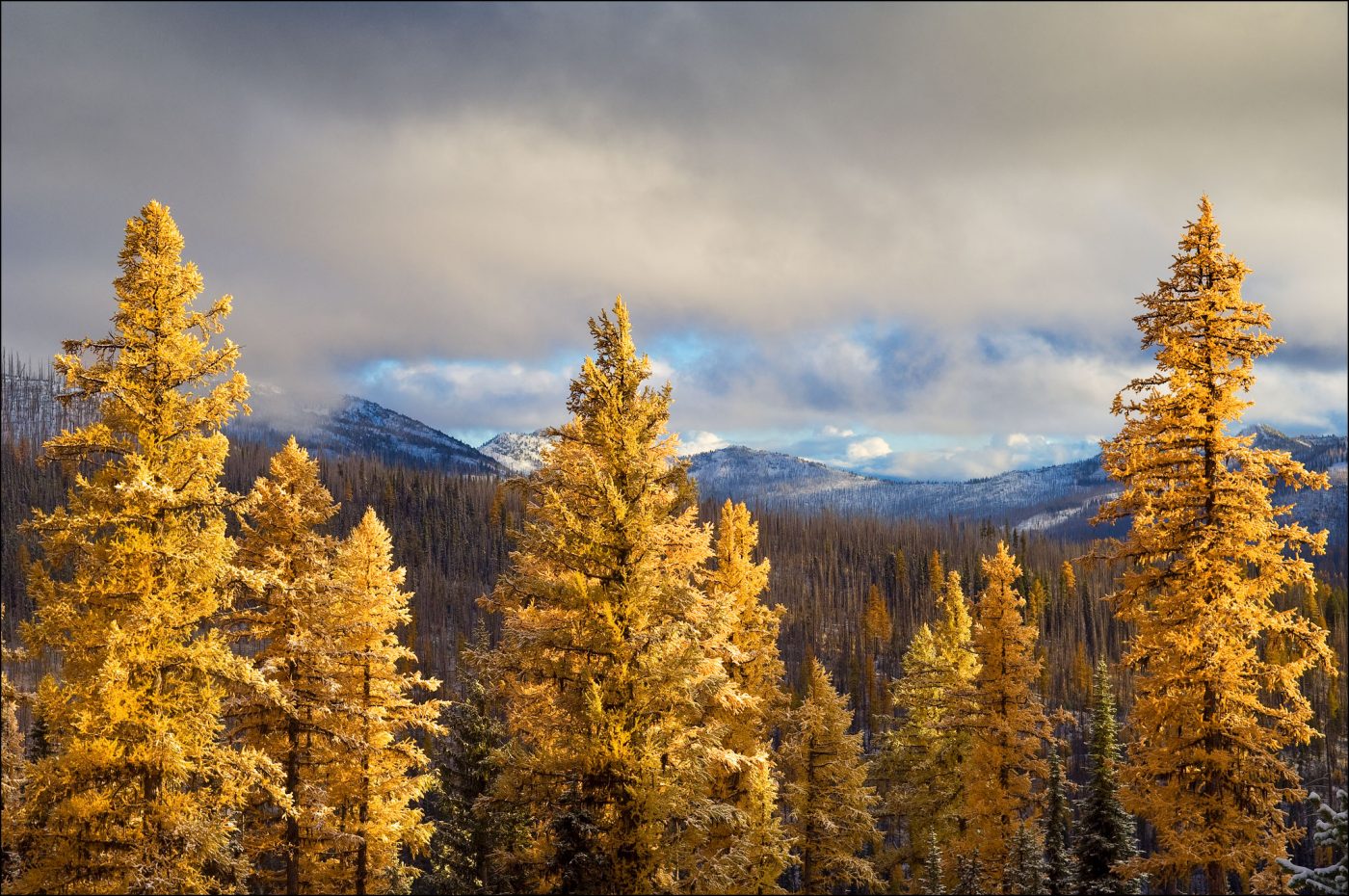
8. Blue Mountains
On a 106-mile loop trip on the Elkhorn Drive Scenic Byway in eastern Oregon, you’ll enjoy beautiful landscapes and fascinating geology while traveling through an area rich in history. For fall color, follow Forest Road 73 along the North Powder River where you’ll find bright yellow cottonwood trees along with rustic barns. Head up to the Anthony Lakes and Elkhorn Summit to capture mountain landscapes with golden western larch trees – the deciduous conifers with needles that turn shades of yellow and orange in autumn. On the southern half of the loop drive, visit the semi-ghost town of Granite where gold was discovered in 1862, and Sumpter, another gold rush town that has seen a bit of a comeback in recent years.
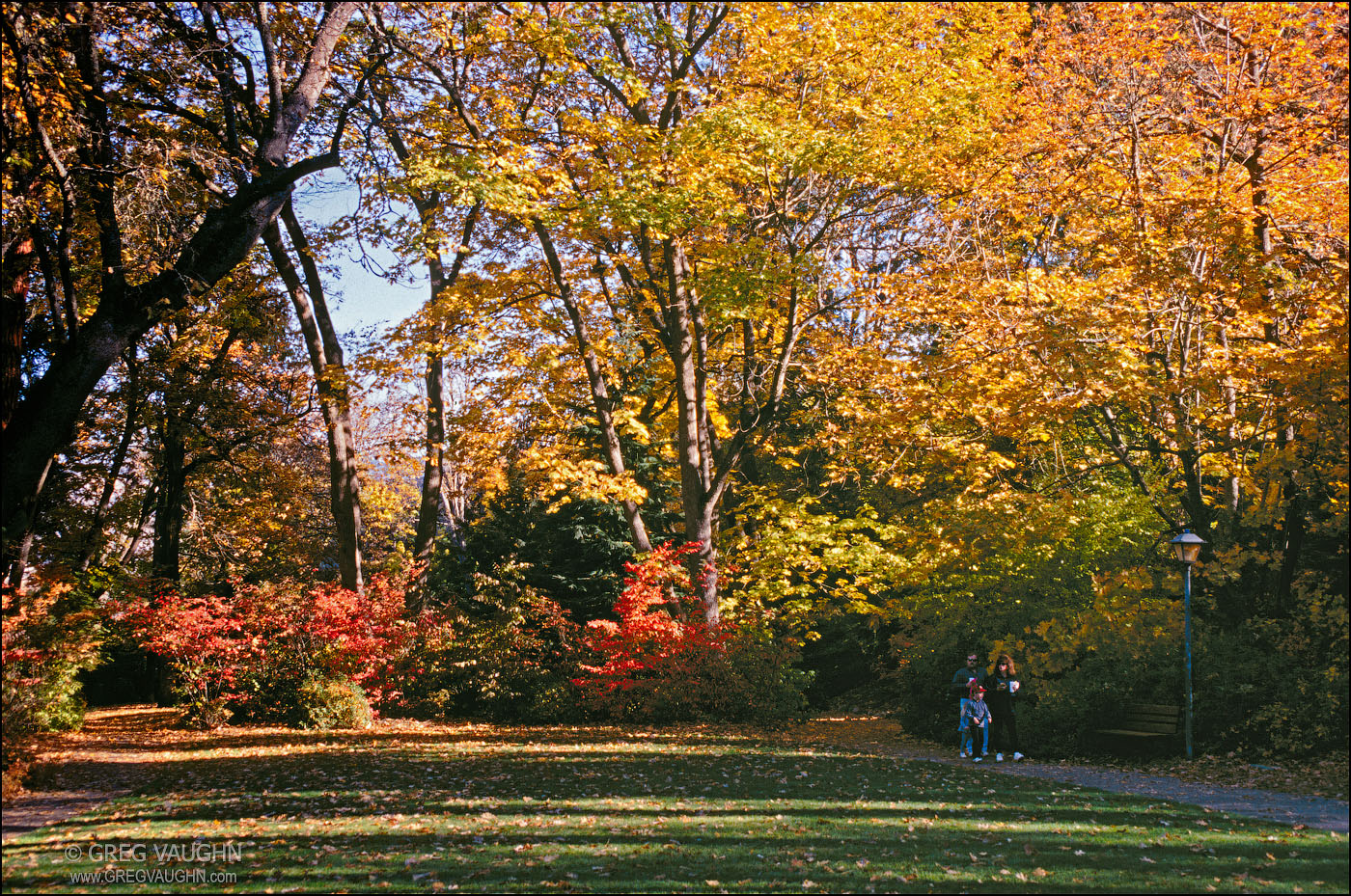
9. Lithia Park
The southern Oregon city of Ashland boasts one of the prettiest municipal parks in the state. Lithia Park is especially beautiful in autumn when a variety of native and introduced trees turn shades of yellow, orange, and red. In addition to native bigleaf maple along Ashland Creek, look for several varieties of dogwood and ornamental maple, as well as beech, ash, sycamore, and ginkgo trees that are scattered throughout the park. Check the Japanese garden for laceleaf maple.
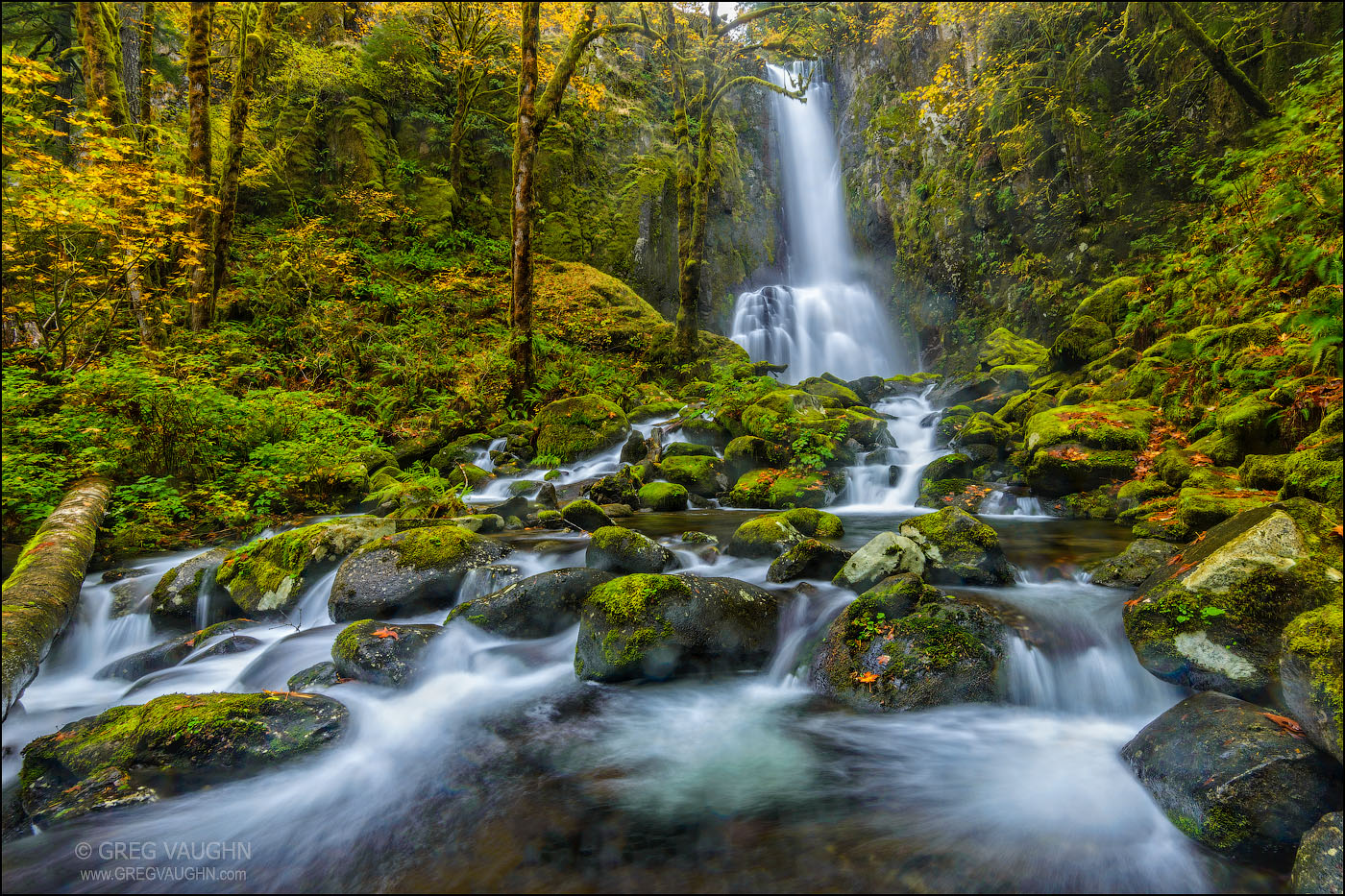
10. Coast Range Waterfalls
Bigleaf maple is one of the predominant tree species in the southern half of the Coast Range mountains, helping to make the drive from the I-5 corridor to the coast on Highways 20, 126, and 38 even more attractive than usual. These maples are often found lining creeks and rivers in the Coast Range, adding extra beauty to photos of waterfalls in the Coast Range. Two of the easiest falls to access from the Willamette Valley are Alsea Falls and Sweet Creek Falls. Getting to each of these requires a pleasant drive through forest and farmland, and then only a short hike on easy trails to get to the falls. If you like to hike as much as I do, head to Kentucky Falls, not far west of Eugene. The 2.2-mile trail leads through magnificent old-growth forest to a triple treat of plunging waterfalls – Upper Kentucky Falls, Lower Kentucky Falls, and North Fork Falls. Finding the trailhead can be a bit tricky and cell service disappears out that way, so download maps before your trip. William Sullivan’s excellent Oregon Coast & Coast Range hiking guidebook has very good directions for both the trail and the drive.
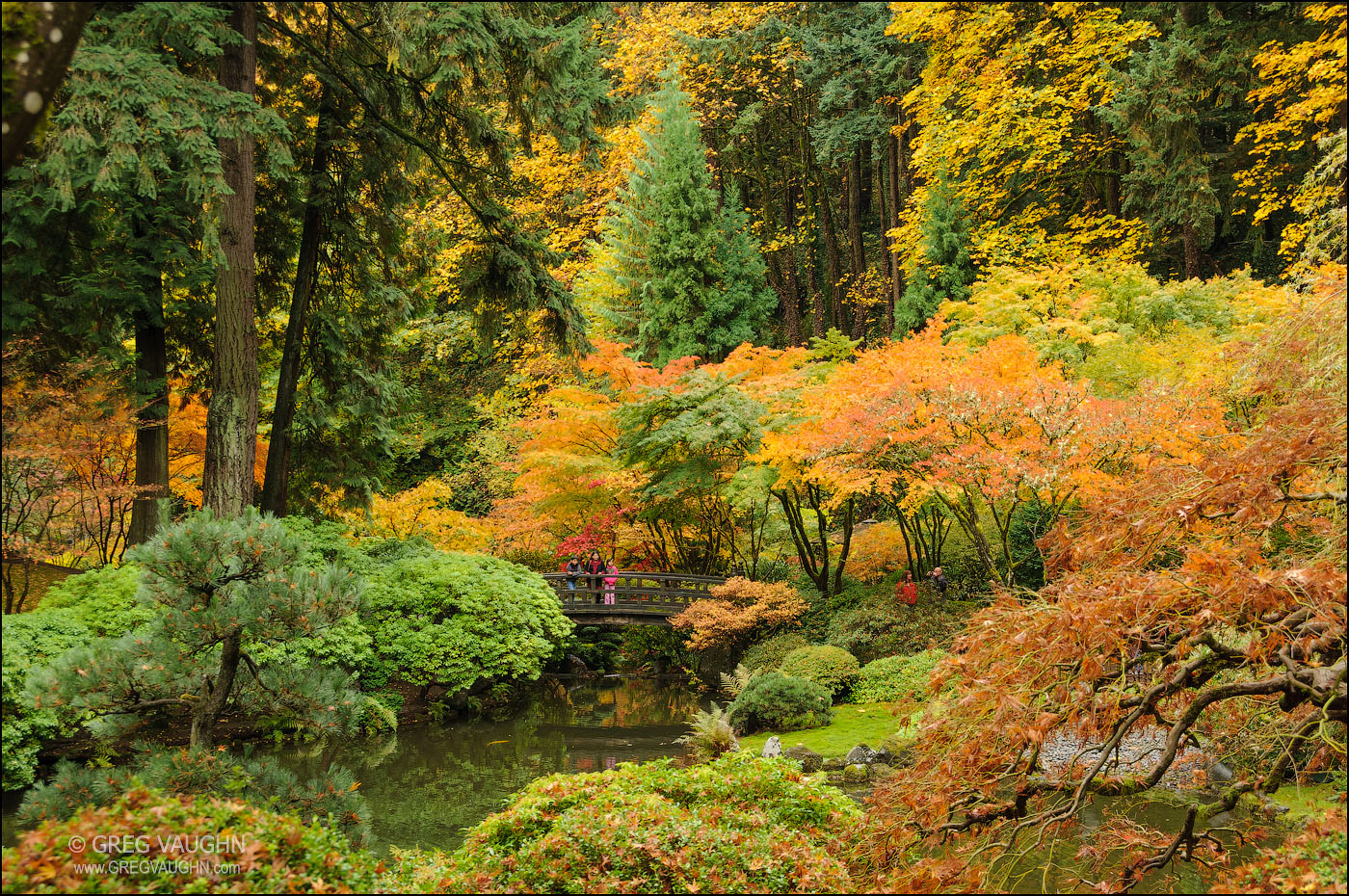
11. Portland Parks
One of the things that makes Portland one of the most livable cities in the country is the extensive park system in the hills immediately west of downtown. Forest Park is one of the largest urban parks in the United States and includes more than 80 miles of trails and forest roads. The Maple Trail Loop is a sure bet for fall color in autumn. You’ll also find a variety of native and introduced tree species at Hoyt Arboretum in the Washington Park complex. And of course, the justly famous Portland Japanese Garden is rife with opportunities for fall color photography. One particular laceleaf maple in this garden has probably been photographed about twelve billion times, but don’t let that stop you from capturing its beauty yourself. Note that there is a $10 fee to use a tripod in the Japanese Garden and that we photographers need to be considerate of other visitors on the narrow pathways. With the capabilities for high ISO and low noise in the newer sensors of our digital cameras, you might not even need a tripod.
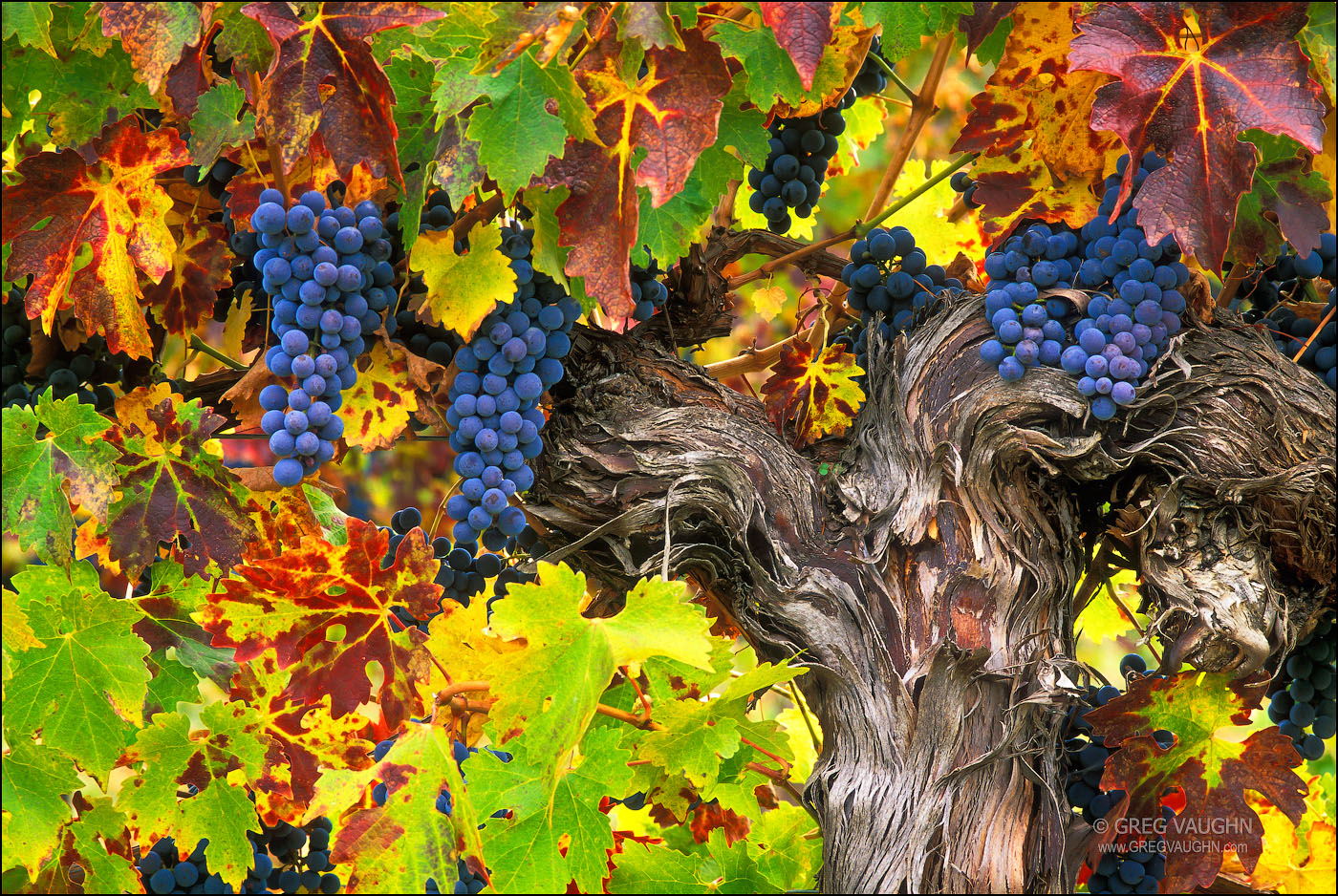
12. Wine Country
Now here’s an idea: combine a day of sampling award-winning Oregon wines with photographing autumn color in the vineyards. Several varieties of wine grapes, including pinot noir and cabernet sauvignon, have leaves that turn beautiful shades of yellow, orange, and red right around the time of the fall harvest. Wineries won’t allow you to wander through vineyards without special arrangement, but most have some vines planted near their tasting room for close-ups. You can find sweeping landscapes of rows of grapevines along wine country roads and the access lanes to the wineries. A drive through the Dundee Hills should give you plenty of opportunities for both photography and wine tasting. A couple of my favorites are Sokol Blosser, which has a few rows of demonstration vines open to the public, and David Hill Winery in the Forest Grove area where there are several vantage points to photograph vines planted on hillsides.
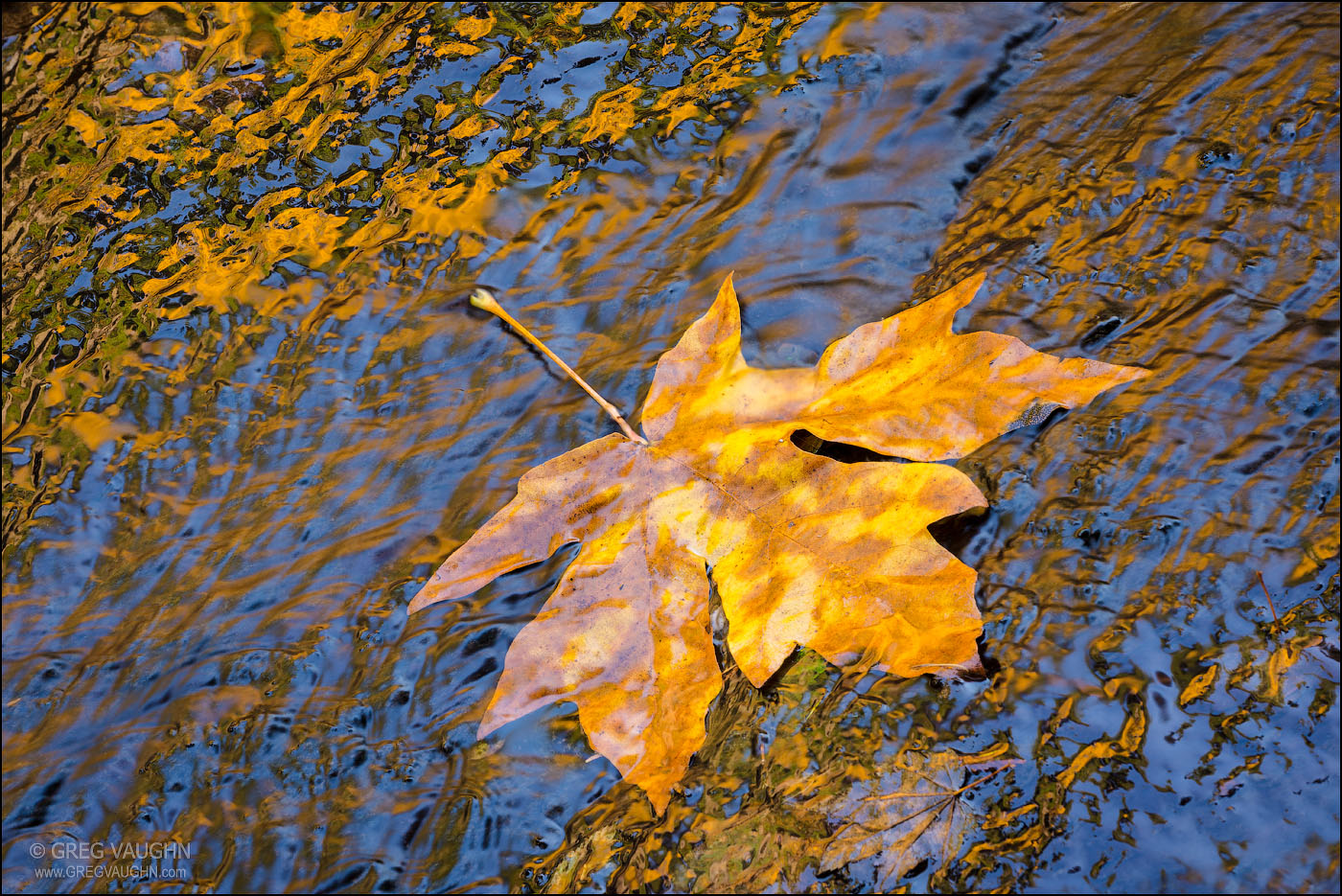
No matter what part of Oregon you live in or are visiting, you can find beautiful fall color. The real trick is getting the timing right. At higher elevations the trees may turn in mid-September, or even earlier. Vine maple can be brilliant orange or red even in August in the Cascades. For low to mid-elevation areas, including the Columbia Gorge, Willamette Valley, Coast Range, and lower slopes of the Cascades, prime time for fall color is usually around mid-October.
More detailed information about each of the above locations can be found in my guidebook Photographing Oregon. For the best fall color spots in Washington, check this blog post, and my book Photographing Washington.
Social media can also be helpful in finding the current status of fall color. Check posts from Pacific Northwest photographers and ask in Facebook Groups and on Twitter what other photographers are finding while they are out shooting. In order to protect sensitive areas, some photographers won’t want to give exact locations but might be willing to give general information. As always, when you’re out shooting, please use Leave No Trace practices and follow the principles of #NatureFirst.
Enjoy this beautiful season and your time spent in nature!

Great summary of Oregon Sites for the Fall season. Many thanks Greg.
Thanks, David. I hope you have a great fall season of photography.
Another great place is the McKenzie River area. Unfortunately, with the fire recently….I’m not sure of all of the areas there that were affected. But I got some great color there a couple of years ago. I wish everyone affected by the fires recover quickly. Thinking of you!
Very true, Barbara. There are some great fall color spots along the McKenzie. One of my personal favorite photos is of a bright yellow bigleaf maple next to the river just above Sahalie Falls.
You’ve compiled a great resource here, Greg. and beautiful images to illustrate!
Thanks, Russ. Great tips on fall color in your recent blog post also.
Any reports for fall color yet this season? Just wondering if the hot weather and no rain has spoiled the leaves. Bend, Silver Falls, Sweet Creek etc.
Hi Mary. I’ve been away from the PNW, traveling and conducting workshops since early September, so don’t have any first-hand knowledge of current conditions in Oregon. I find that questions to photo groups or locals on social media usually results in some good information. Another excellent source is NaturePhotograpers.network.